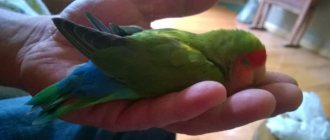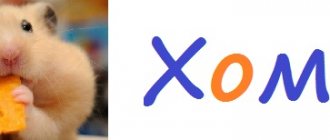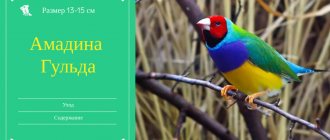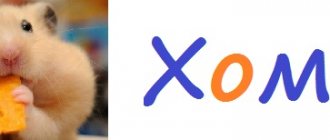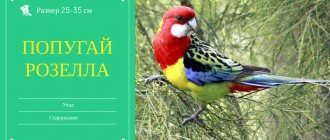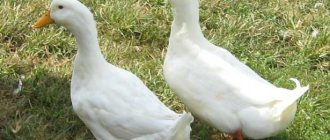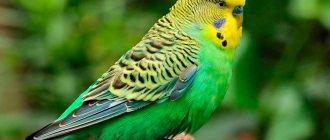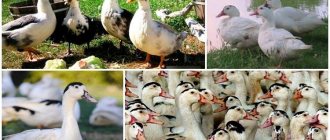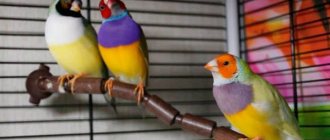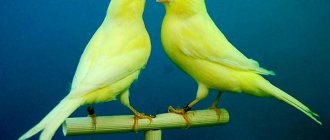Such a natural process as the reproduction of budgerigars at home does not always go well. People who are passionate about breeding cannot do without theory. The breeder must know how to choose a pair of birds and what conditions are required for successful breeding. In addition, you need to be able to care for parrots so that the whole family is healthy. If the owner is ready to go through this difficult path, he can begin equipping the cage.
Conditions for breeding
Budgerigars are ideal for breeding at home. Active birds have deservedly held the leadership among pets for many years, because they are friendly and cute. In addition, they do not irritate with loud screams, are peaceful and easy to care for. To successfully breed variegated wavy fish, you must adhere to certain rules.
Which parrots are suitable for breeding
Choosing a parrot for further procreation should be based on certain criteria:
- Health. A young, healthy individual has dense plumage, the feathers are not ruffled, they fit tightly to each other without bald spots.
- Appearance. The eyes should be black and shiny, and the beak with nostrils should be dry and clean. You should choose an active parrot that flies around the cage, plays and chirps. A sleepy, passive bird sitting on a perch with its eyelids closed is most likely seriously ill. It is not suitable for reproduction.
- Age. It is easier to expect offspring from a young bird. Parrots up to 3 months old have a clearly drawn wavy pattern at the base of the growth on the beak - the cere. From 3 to 8 months, a cap appears near the wax, and the waves disappear. A rim appears around the eyes, which is fully formed by 8 months. Further, it will become difficult to determine the age of the bird, since a parrot with a rim around its eyes can be either 8 months or 10 years old. For this reason, you should buy a parrot up to 8 months old. Males aged from one to 6 years, and females from 3 months are suitable for breeding.
- Plumage. As parrots age, they develop the habit of plucking feathers with their beaks, which is a sign of poor care. An inspection should be carried out to detect this habit, because it will be impossible to wean the bird from it.
- Voskovitsa. Young males have a lilac-colored wax, while females have white, blue or lilac.
Good offspring will come from active young parrots of medium size without obesity or frailty.
Matching
Budgerigars at home reproduce only after choosing partners. The task is complicated by the fact that, in addition to basic instinct, parrots adhere to personal tastes when choosing a partner.
Instructions for choosing a pair:
- Choose a similar shade of plumage for your partners.
- The older female is dominant. To prevent this from happening, it is better that the male is 2 years older. This age difference is optimal.
- Before the first meeting with the “lady,” the male must mature (maturation occurs after molting), and the female can be very young (3-4 months). An adult female can peck an immature partner.
- Try to choose partners of equal size and temperament.
- Be sure to agree with the seller before purchasing about the possibility of returning the bird if the partners are not suitable for each other.
- Let the couple adapt and get to know each other better. At this moment, skirmishes over food may arise between partners, so give each their own container of food. If the relationship doesn't work out, don't wait, but return the parrot and try again with a new partner.
The best period for mating
In the wild, parrots reproduce based on basic instinct, but in an apartment, the breeder needs to know the optimal timing for mating. The best time is summer and early autumn. Mating in early spring leads to the production of unhealthy offspring. The reason is the need for 14-16 hours of daylight for normal fetal development.
Is it worth interfering?
Many breeders are able to let go of the situation after installing the nest house and let the birds deal with the offspring themselves. A fleeting inspection of the nest several times throughout the entire period seems sufficient to them. But such people are a minority; the rest simply cannot resist, and there are two reasons for this: excitement for their pets and interest in the process.
Some owners, when breeding budgies, get very carried away and can bore their own birds. This manifests itself in constant peeping into the nest, persistent adding of sawdust when the female throws it out anyway, and after laying, regular inspection of the eggs is added.
It is important to listen to the behavior of a pair of budgies, especially the female. If you see that she is clearly nervous and becomes aggressive when you put your hand in the nest, you should not make the bird nervous with your presence. If there is an urgent need, wait until she leaves the nest and takes care of the feeder with grain.
You should handle the eggs very carefully. It is better not to pull them out of the nest unless necessary.
More experienced breeders number each egg with a soft pencil so that they can control the sequence of appearance of the chicks. If you have already hatched two chicks, and egg number 1 is still in the nest, there is a high probability that something went wrong and the embryo died.
Before putting your hands into the nest, you can rub your hands with chamomile; some females cannot tolerate foreign odors during the laying period. And they may, in the future, abandon the chicks after you touch them.
Photo: Melanie Schmidt
Budgerigar chicks are born every other day. At this moment, the humidity of the room plays a very important role (the norm is more than 60%). Thanks to this, the chicks can get out of the egg on their own. There is a thin film under the egg shell, and if the air is too dry, it instantly dries to the newborn, which leads to the death of the parrot.
Babies have an “egg tooth” on top of their beaks, with which they break through the wall of the shell. The female can also sometimes participate in the process: as soon as the chick makes a small hole, she begins to help him free himself from the remains of the egg. The shells are usually eaten by females. It happens that curious owners themselves try to help the chick get out of its home; this can only be done if you are confident in the incubation period and there is a professional ornithologist next to you who shares your zeal to participate in the process.
Newborn chicks bear little resemblance to their adult parents: blind, naked, with only a little gray fluff on their backs. At first, babies are so helpless and weak that they are unable to hold up their heads and lie on their backs. The female feeds them in this position. At this time, she is constantly next to the chicks, and, warming with her body, does not allow the babies to freeze.
Photo: PuppiesAreProzac
Just a hatched budgerigar chick weighs 1 gram; babies of exhibition budgerigars most often weigh more than 1.5 grams.
Since the chicks do not hatch at the same time, and their development occurs very quickly, then, by the time the last chick appears, the older one will already be quite large compared to the younger one. If there were more than five eggs in the clutch, and the female successfully hatched all the offspring, there is a high risk that the grown chicks may crush the babies.
Preparation for masonry
In order for budgies to give birth to healthy offspring, you should prepare for the laying period.
Suitable conditions
The optimal duration of daylight hours is on average 16 hours. This condition is easily met in the summer, but in the fall infrared lamps are used for additional illumination. The temperature range at the cage installation site is from 20 to 30 degrees. The room with the cage should not be noisy. Prohibited: shouting, loud music, repairs.
Cage requirements
A comfortable cage contributes to the birth of strong offspring.
Important:
- Beginners in breeding wavy fish make a typical mistake by placing partners in a tight cage for quick rapprochement. The cramped space is uncomfortable for the birds, so they may not have any offspring.
- The minimum dimensions of a cage for partner parrots are: length - from 60 cm, width - 30 cm, height - 40 cm. An increase in the area is allowed, because after breeding, numerous offspring will live in the room.
- The cage requires 2 doors. Using the first, it is easy to set up a nest, and with the help of the second, it is easy to clean the cage, put food and drink.
- The nesting house is considered the most comfortable for the female to lay and raise offspring.
Nest house
The following types of houses are found in pet stores:
- Vertical. Perimeter – 20×20 cm, 25 cm high. Pros: the chicks will not be able to fly out of the nest early. The only downside is the high location of the exit, which risks damage to the female’s clutch.
- Horizontal. Dimensions 25x20x15 cm. The low entrance will not allow damage to the masonry, but the chicks may fall out of the house ahead of time.
- Compromise. Dimensions 20x25x20 cm. The area is convenient for the safe development of the clutch, the chicks will not fall out of the house, and the step at the bottom under the perch helps the female to sit on her eggs comfortably. The young grow in close quarters, but the chicks do not crush each other.
Additional recommendations:
- The minimum opening in the nest is 5 cm. If the female is picking at it, do not interfere, leave her the right to adjust the opening at her own discretion.
- The nest is hung outside or inside. Hanging it outside is convenient to save space when the cage is small, but the best option is to place the nest inside for a sense of security for the future parents.
- It is better that the house is made of solid spruce, pine or birch with an easily detachable lid for cleaning and disinfection.
- Plywood, chipboard and cardboard make the nesting house cold and are saturated with glue and chemicals, which is harmful to the birds’ bodies.
Disinfection
Accessories that parrots will need during the breeding period are disinfected. Drinking bowls, food containers and toys are dipped in boiling water with a weak percentage of “Whiteness”, then rinsed thoroughly. The nesting house is dismantled and washed with baby soap, dried and fried in the oven for 30-40 minutes at 120 degrees. Crushed chamomile is added to the sawdust sprinkled inside. This herbal remedy will prevent the appearance of gamas mites.
The right time for breeding
Experts say that the best time for parrots to start breeding is late spring. The daylight hours have increased and reach 15 hours, there is a lot of green food around and enough warmth. Until early autumn, you can plant parrots on clutches. It’s more difficult in winter, as additional lighting needs to be installed.
Experienced ornithologists do not advise preparing pairs for future offspring in early spring. The past winter has weakened them. The mating season for budgerigars will pass, but healthy offspring will not be produced. The body of the expectant mother needs vitamins in sufficient quantities. And in spring and summer, you can absolutely safely feed her with greens up to three times a day.
Nutrition
A balanced diet for budgies during mating and egg laying is required.
General rules
Female wavy birds require additional nutrition. In the wild, the “lady” is supplied with food by the male, but at home the owner should worry about this. When laying, a parrot spends a large amount of energy, and if there is a lack of nutrients, the embryos may remain underdeveloped or die.
Basic recommendations:
- The most balanced mixtures of grain crops are not able to replenish the reserves of all “building materials” in the form of amino acids, calcium, vitamins A, D, B and other minerals.
- Protein is included in the menu. Eggs are the best source of protein, and in combination with vegetables and shells they will help replenish the strength of a young mother, and she will more easily endure the laying period. To avoid excess protein, introduce complementary foods 2-3 times a week.
- For a strong shell, chicks need calcium, which is why females themselves should consume crushed shells. If there is a lack of calcium, the mother will peck at her own eggs.
- Fruits and vegetables are suppliers of vitamins and folic acid, which is necessary for the development of the bird’s body.
Make sure that the parrot and his partner are always fed, and that there is plenty of food in the feeders.
Recipes for mash during the breeding season
The following mash recipes will restore the balance of vitamins and minerals during the hatching period:
- rice porridge + carrots + apples + a quarter of a boiled egg + greens;
- lentil grains, millet, oats + grated beets + eggs;
- a mixture of boiled millet and oats + pearl barley + boiled egg + greens;
- bell pepper + grain sprouts + hamarus (freshwater crustacean);
- zucchini + carrots + greens + egg + steamed cereals;
- pumpkin + low-fat cottage cheese + broccoli + wheat sprouts.
Additionally, you should pay attention to the following points:
- Make sure there is chalk and any mineral mixture in the cage. As an alternative, birds obtain calcium from ground calcium gluconate tablets that are added to mixtures.
- As soon as egg laying stops, soft food is removed from the diet and the volume of grain feed is increased. Eggs are offered in small doses twice a week.
- 1-2 days before the birth of the offspring, the mother is again fed with eggs and vegetables rich in carotene: pumpkin, carrots, peppers, grain sprouts and herbs.
Disinfection
All equipment, items and accessories that will be used during the breeding season of parrots must be disinfected. These include:
- Cell;
- bowls for food and drink;
- toys.
Each of these items is disinfected in one way. To do this you need:
- Dissolve a weak solution of bleach or bleach in hot water.
- Soak the item to be disinfected in the resulting liquid.
- Rinse and clean the item with a brush.
- Rinse the item thoroughly.
The nesting house also needs disinfection, but in a different way. Step-by-step procedure:
- Disassemble the structure of the house into parts.
- Clean all elements with a brush dipped in water and baby soap.
- Dry everything thoroughly.
- Depending on the material from which the nest is made, the washed and dried house is calcined either in an oven preheated to +120°C for 30-40 minutes, or on a gas burner until the outer wall is heated. Plastic houses are kept in the sun for 6-8 hours.
The nest filler (hay or sawdust) must be pre-mixed with dried medicinal chamomile in equal proportions before placing it in the house - this will prevent the appearance of parasites (ticks, etc.) in the filler, and will also strengthen the bird’s nervous system. The floor in the house should not be open. Before the chicks hatch, it is not recommended to sprinkle sawdust on the floor of the nest - the egg may get lost in it. Therefore, it is better to use hay first, and after the chicks are born, place sawdust in the house.
Male courtship
During mating games, the male's cere turns a bright blue hue, while that of the female turns brown, and increases in size. Changes in the cere are the result of a hormonal surge. The male begins active courtship of the female, and she may practically not eat, waiting for feeding from her partner.
Interesting! The courtship process looks funny: the male often nods his head and sings loudly. The couple begins to dance and talk together. At the same time, the male parrot taps with its beak on surrounding things and on the beak of the female. While dancing, the suitor makes interesting sounds, not forgetting to offer the lady food from his beak. This is a kind of demonstration of care that as soon as mating is over, the male will remain the guard and provider of food.
Incubation period
The incubation time for parrot eggs lasts 18 days. The first egg in the nesting house after fertilization appears 7 days later. The mother does not sit on the clutch right away, but tries to stay longer in the nest. The bird sits completely on the eggs after the second egg appears.
On the eve of the egg's appearance, the parrots chew the chalk harder, the mother becomes fatter, and the volume of her droppings increases. The parrot seems funny: with a round body and a trembling tail. She spends a long time rubbing herself in the corner of the cage, building a nest, and gnawing on all surrounding objects. The female's belly is exposed - a brooding spot that she will use to warm the eggs. The skin heats up and swells, causing the feathers to stand up.
Number of eggs
Laying occurs once every 2 days. On average, a female lays up to 7 eggs per clutch, but the optimal number is 5 eggs. At the same time, the mother heats all the eggs evenly, and the risk of frozen embryos is reduced. If you see a larger number of eggs, they are placed under another female or “hatched” in an incubator.
Hatching conditions
A bathing suit must be installed in the cage. In dry air, the female can independently regulate the optimal humidity with wet feathers.
Fruit identification
Fertilized and unfertilized eggs can be distinguished without candling. Fertilized ones are porcelain or white-gray in color, while unfertilized ones acquire a yellowish tint. The latter do not need to be immediately removed from the clutch, because they become a heating pad for others when the mother is away. But frozen eggs with embryos inside (recognized by a gray-brown tint with spots) must be removed immediately.
How long does it take for chicks to hatch?
The first chick is born 18-19 days after the eggs are laid. The weight of a hatched bird is 1 g. Parrots are born at different times, and development in the first days is quite rapid. As a result, by the time the last chick is born, the first one will be much larger than the others. If all the embryos are successfully hatched, there is a danger that the grown parrots will pass on the smaller ones.
Chick development
The harmonious development of young animals depends on proper maintenance and nutrition.
Care of offspring
Newborn parrots develop rapidly.
Care involves the following actions:
- Cleaning. When the chicks reach 2 weeks of age, you need to do a general cleaning of the nest: remove unfertilized eggs and all debris. Before this, transfer the babies to a warm box or small box. Inspect all chicks. Dirt sticks to their paws, which interferes with the normal growth of their limbs. You should immerse the babies' paws in warm water and let the dirt come off. Fresh birch sawdust is placed on the bottom, the chicks sit on them, and the house is installed in its old place. Clean the house as soon as possible to avoid overcooling the cubs.
- Nutrition of young animals. For the first 4-6 days, the female feeds the cubs with milk from the crop. After this, the food is softened grains, which the mother places in advance in the crop and feeds the children.
- Body mass. Weight increases fastest in the first 2 days. It increases by 200%. On the 23rd day, the greatest mass gain occurs, and a decrease in weight is observed due to the energetic body movements that the bird performs before the first flight.
- Departure. The first flight occurs on the 35th day. After this, the chicks are left with their mother for another 2 weeks.
When can you plant
Young animals may be diagnosed with the diseases “helicopter” and “splits” - curvature of the paws. The cause is staphylococcus infection or reproduction of closely related budgies. You can help the parrot only before it flies out of the house, so you should contact an ornithologist or veterinarian in time. 2 weeks after the start of flights, they are transplanted into a separate large cage. There the birds fly until sexual formation - molting.
Frozen or unfertilized eggs: causes
When there are 1-2 frozen eggs in a clutch, this is the norm. The female is sometimes physically unable to warm all future offspring. When there are a lot of frozen embryos, or all the embryos have disappeared, you need to think about it.
Reasons for embryo freezing:
- infectious diseases;
- unbalanced diet;
- water with chemical impurities;
- incompatibility of parental genetics;
- high or low humidity in the room;
- inability of the female to incubate.
Why don't parrots mate?
In certain situations, it is not possible to breed parrots because they refuse to mate.
Causes:
- When parrots do not like each other, the partners will not reproduce.
- It is a mistake for breeders to try to breed two males, because it is difficult to accurately determine the sex of a parrot. If two females live together, then laying eggs is possible, but there will be no embryos in them.
- The early age of the male is before molting. Even in the case of sympathy between parrots, if the male is immature, there will be no chicks.
- Unfertilized eggs will not appear due to the old age of the partners.
Breeding parrots can be organized in a city apartment. Proper nutrition, a comfortable cage and attention to pets will give you healthy and strong offspring.
Environment
Before nesting, birds need preparation, which should begin two weeks before hanging the house. First of all, it is necessary to increase the duration of daylight hours to 14 hours through artificial lighting. And this needs to be done gradually. Due to a sharp increase in daylight hours, birds may begin to molt.
The temperature of the room in which the parrots will live should not fall below +15 °C. Cold leads to increased consumption of nutrients by the body, which can interfere with the nesting process. The exception is birds kept in an outdoor aviary until the first cold weather. It is enough for them to create an environment with a temperature of about +11 °C. At the same time, it is necessary to exclude heat, which can cause the death of embryos.
During the breeding season of parrots, repairs and other activities that may create noise should be postponed. It is not advisable to move the cage. Birds should feel comfortable and safe.
